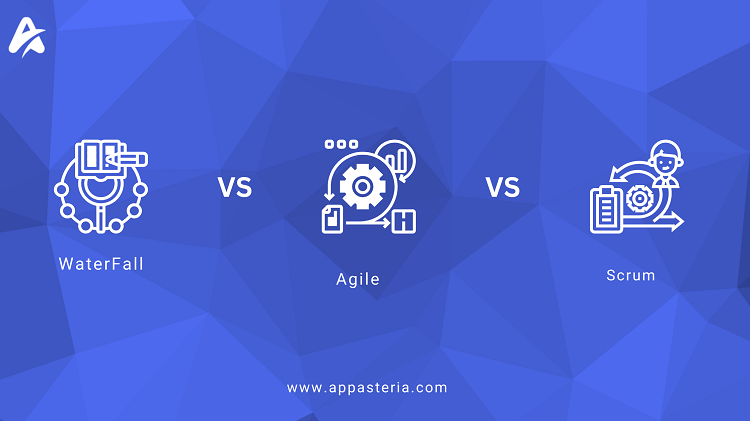If you’re planning to develop a new software product, validating the problem and testing the solution before launching a full-fledged product is crucial.
The Lean Startup methodology heavily emphasises the MVP stage because it allows you to validate your assumptions quickly and cheaply.
In this article, you can understand MVPs’ meaning, purpose, and benefits and get a step-by-step guide on How To Build An MVP
What is a Minimum Viable Product?
MVP stands for Minimum Viable Product, a term used in product development. Also, entrepreneurship describes the earliest version of a product released to the market with just enough features to satisfy early adopters. An MVP is a starting point, not the final product. However, the idea is to keep repeating and improving the product based on user feedback until it meets the target market’s needs. By launching an MVP, companies can test their assumptions about the market and customers’ needs before investing significant resources in a full-fledged product. Now we will discuss how to build an MVP.
Why is MVP Important?
An MVP is essential because it allows companies to test their product concepts with minimal resources and get feedback from real users.
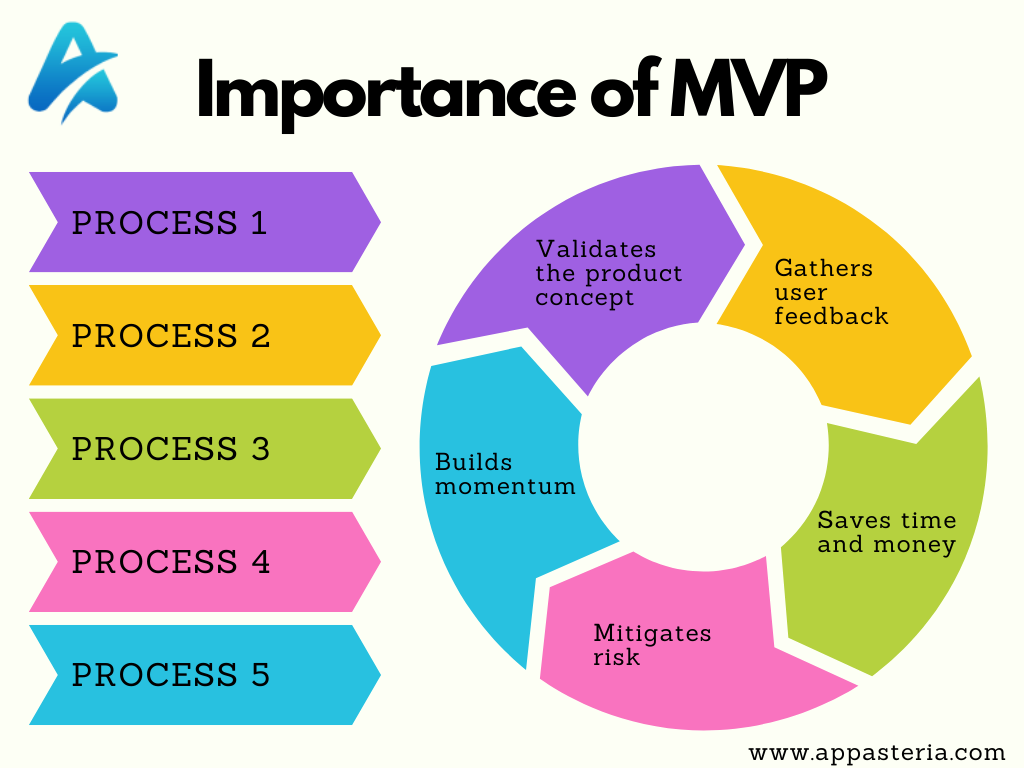
Validates the product concept: An MVP helps entrepreneurs validate their product idea. And determine whether there is an actual demand before investing significant time and resources in its development.
Gathers User Feedback:
Launching an MVP allows entrepreneurs to gather feedback from real users. Informing future development decisions and helping improve the final product.
Saves Time and Money:
By launching an MVP first, entrepreneurs can save time. And money on developing a full-fledged product that may not meet the target market’s needs.
Mitigates Risk:
An MVP is a way to test the waters and minimize the risk of failure. Launching an MVP allows entrepreneurs to assess whether their product idea is viable. And make necessary adjustments before investing more time and money into it.
Builds Momentum:
An MVP can help entrepreneurs build product momentum and attract early adopters. And investors, and establish a brand presence in the market.
Types of Minimum Viable Products:
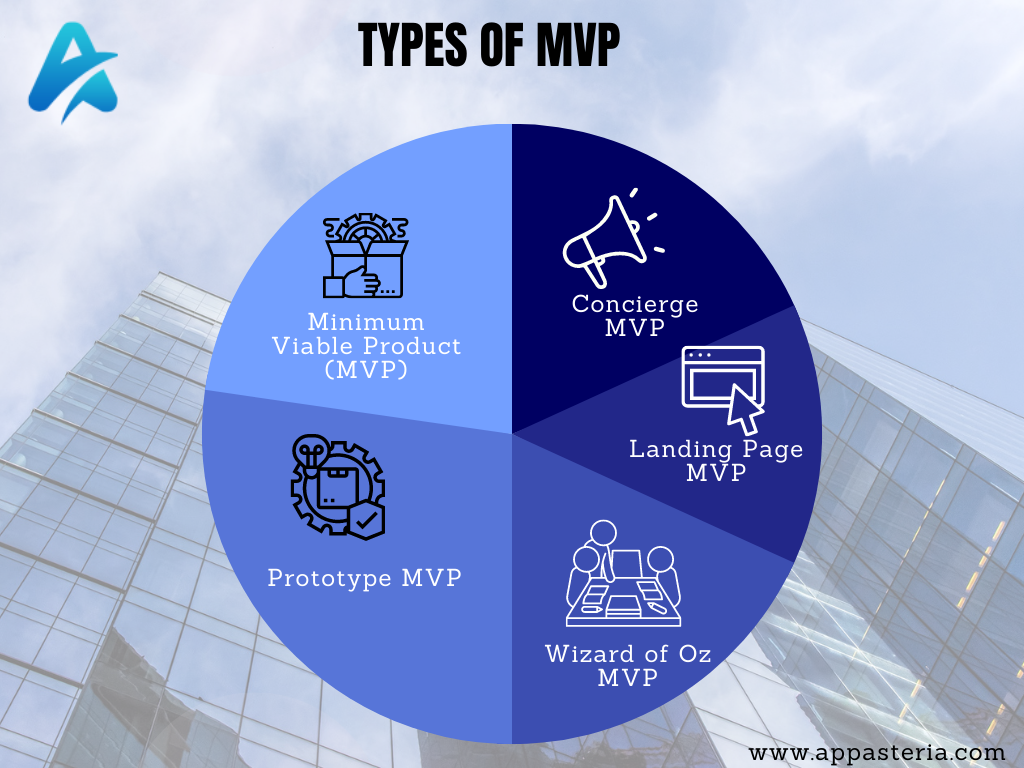
Minimum Viable Product (MVP):
It refers to the most essential product version that can be released. This version contains only the essential features and functions necessary to solve the core problem the product aims to address. The MVP helps validate the product idea, gather early adopters’ feedback, and make informed decisions on future product development.
Concierge MVP:
This type of MVP involves manually performing tasks that the product is intended to automate. It’s an effective way to validate an idea by getting a first-hand experience of the problem and finding out what potential customers are looking for in a solution.
Landing Page MVP:
This type of MVP is a single web page that explains the product’s value proposition, features, and benefits. The landing page MVP is used to gauge interest from potential customers and gather data on how they interact with the product.
Wizard of Oz MVP:
Manually did the behind-the-scenes work on this MVP simulation of a complete product. The simulation provides an authentic experience for the customer, but the automation of the process still needs to be implemented.
Prototype MVP:
A prototype MVP is a physical or digital representation of the product. They can test this rough and basic product version and use it to gather feedback. The prototype MVP is used to validate the product’s design and usability and get a sense of the product’s market fit.
The right MVP depends on the specific needs and goals of the product, the target audience, and the budget.
How to Build a Minimum Viable Product (MVP)?
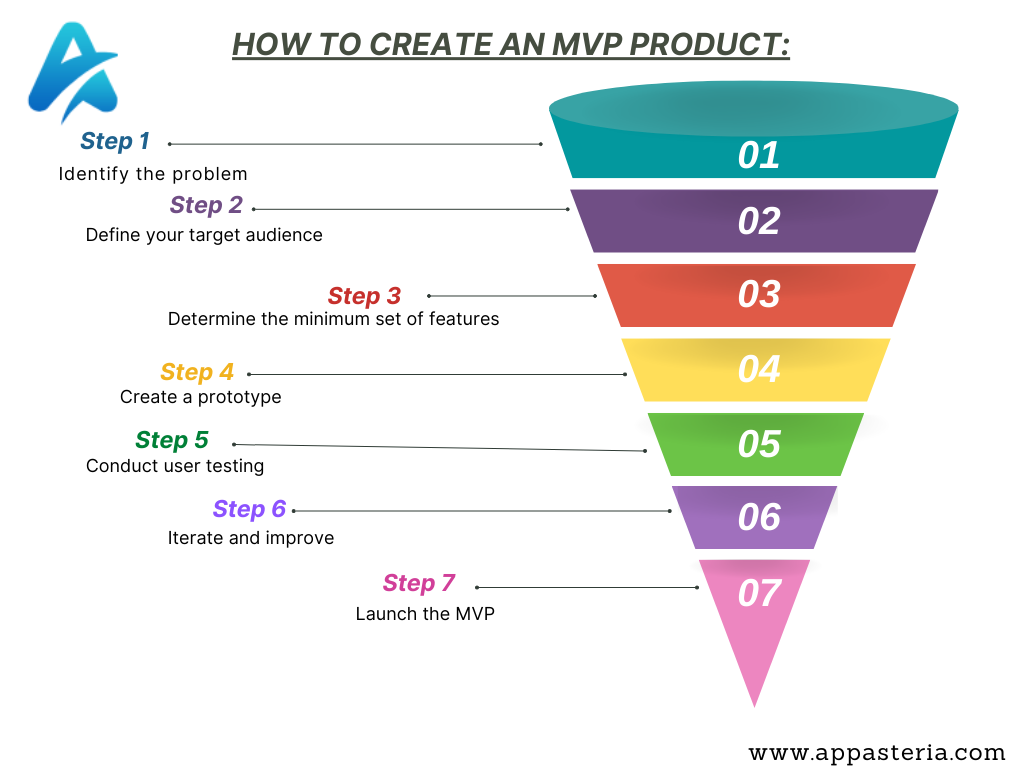
In these following steps, you can learn how to build an MVP:
Identify the Problem:
Start by defining the problem that the product aims to solve. This will help you prioritize the features and functions essential to the MVP. If the product doesn’t nail the problem, customers won’t go along with it to find a solution. A survey conducted by CB Insights revealed that the number one reason for a startup’s failure was a ‘lack of market need.’
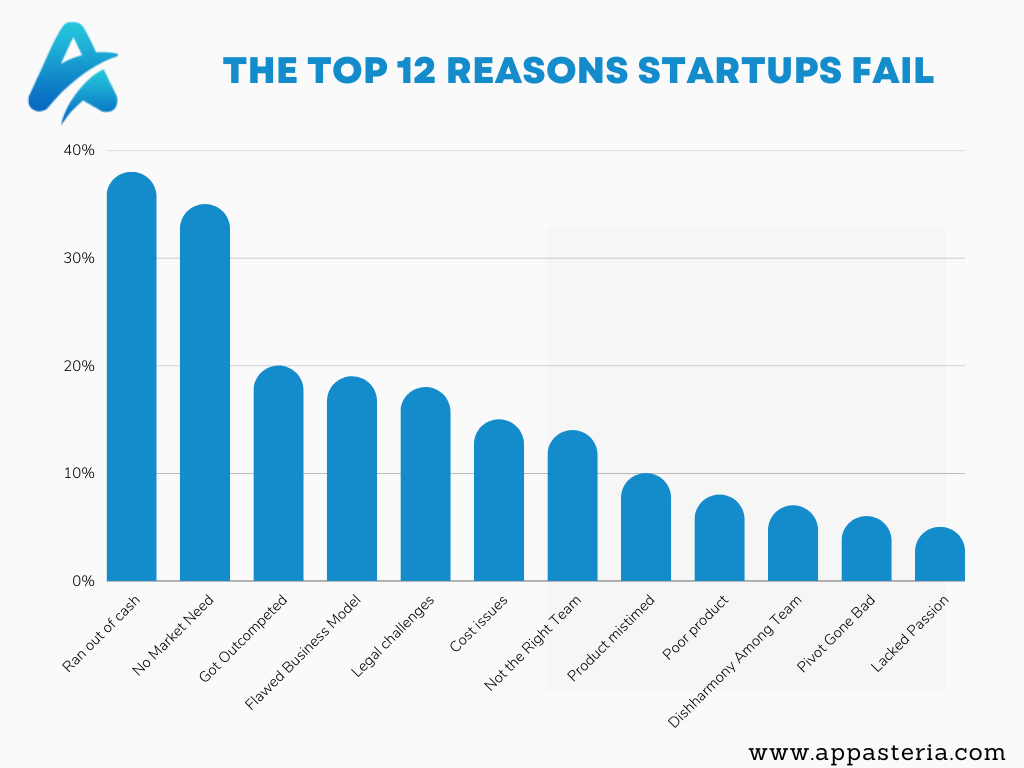
Define Your Target Audience:
Knowing who your target audience is will help you understand their needs and what they’re looking for in a solution. This information will guide the development of the MVP.
Determine the Minimum Set of Features:
Establish the minimum features necessary to solve the problem based on the problem and target audience. This will help you focus on what’s important and avoid building unnecessary features.
Create a Prototype:
Develop a basic prototype of the MVP that can be tested and used to gather feedback. The prototype can be digital or physical and should be designed to test the core functions and features of the product.
Conduct User Testing:
Get feedback from potential customers by testing the MVP with a small group of users. This will help you identify flaws or issues and make informed decisions on future product development.
Iterate and Improve:
Based on the feedback from user testing, iterate and improve the MVP by adding or removing features, fixing bugs, and making design changes.
Launch the MVP:
Once you’re satisfied with the MVP, launch it to the market. Be prepared to continue collecting feedback and iterating on the product based on market feedback and trends.
These are the basic steps for building an MVP product. The process may vary depending on the specific needs of the product.
Also, Read ( Waterfall Vs Agile Vs Scrum )
Here are a Few Examples of Minimum Viable Products:
Airbnb:
Airbnb started as an MVP by allowing users to rent out air mattresses in their apartments to attendees of a design conference in San Francisco. From there, it evolved into a platform connecting travelers with local hosts to rent spare rooms, apartments, and houses.
Dropbox:
Dropbox’s MVP was a simple file-sharing platform that allowed users to upload files to a server and share a link with others to download the file. Today, Dropbox offers a wide range of collaboration and file management tools for individuals and businesses.
Instagram:
Instagram’s MVP was a basic photo-sharing app that allowed users to take photos, apply filters, and share them with friends. Instagram has evolved into a multi-feature platform that includes messaging, shopping, and video sharing.
Here are a Few Common Mistakes to Avoid When Building a Minimum Viable Product (MVP):
Overcomplicating the MVP:
Keeping the MVP simple and focused on the core problem is essential. Avoid adding unnecessary features or making the product too complex, as this can slow development and make validating the concept complex.
Underestimating the Value of User Feedback:
It is crucial for the success of the MVP and should be incorporated into the development process. User feedback makes it easier to know if the MVP meets the target audience’s needs.
Ignoring the Design:
The design of the MVP is essential, even if it’s a simple prototype. A well-designed MVP can help attract early adopters and engage them with the product.
Not Testing the MVP With Real Users:
Testing the MVP with real users is essential for getting valuable feedback and determining if the MVP is viable. Refrain from relying on assumptions or guesses, as honest user feedback is the best way to validate the concept.
Not Focusing on the Value Proposition:
The MVP should be designed to communicate the value proposition and what the product is solving. Avoid focusing too much on features and not enough on the problem and the product’s value.
Need for a Clear go-to-Market Strategy:
The MVP should have a clear go-to-market strategy, including a plan for attracting early adopters and getting the product in front of potential customers.
Not Being Open to Change:
Being available to change and willing to iterate and pivot is essential based on feedback and market trends. The MVP is a starting point, not the final product, and should be continually improved and adapted based on market feedback.
By avoiding these common mistakes, you can increase the chances of success for your MVP.
Here are Some Tips for Targeting the Right Market While Building a Minimum Viable Product (MVP):
Identify the Problem:
The first step is to understand the problem you’re trying to solve and the target market that it affects. This will help you build an MVP that addresses the target market’s needs.
Conduct Market Research:
Market research is crucial for understanding your target market’s needs and pain points. Surveys, focus groups, and customer interviews can all be used for this.
Define Your Target Audience:
Determine your target audience by creating customer personas that represent the characteristics and needs of your ideal customer. This will help you tailor your MVP to the specific needs of your target market.
Evaluate the Market Size:
Calculate the market size by researching the number of potential customers and the addressable market size. This will help you determine if the market is large enough to support your MVP.
Test Your MVP With Real Users:
Test your MVP with actual users from your target market to validate the concept and get feedback. This will help you refine the MVP and ensure it meets the target market’s needs.
Continuously Evaluate and Adapt:
Evaluate and adjust the MVP based on feedback from the target market. This will assist you in maintaining your attention on the target market’s needs and modifying the MVP as needed to stay current and valuable.
By creating an MVP that caters to the demands of your target market and specifically addresses the issue you’re trying to solve, you can raise your chances of success by using the advice provided here.
Here are Some Key Metrics for Measuring the Success of a Minimum Viable Product (MVP) After it’s Built:
User engagement:
It is a crucial metric for measuring the success of an MVP. This can include metrics such as the number of active users, time spent on the MVP, and interactions with the MVP (e.g. clicks, taps, etc.).
Conversion Rate:
It determines how many users are taking the desired action (e.g. making a purchase, signing up for a service, etc.). This metric will help you understand how well the MVP performs and what value it provides to users.
Customer Satisfaction:
Measures customer satisfaction and how happy users are with the MVP. This can be measured through customer feedback, surveys, and Net Promoter Score (NPS).
Retention Rate:
Measures how many users continue to use the MVP over time. A high retention rate is a good sign that the MVP delivers value to users and that they find it helpful.
Referral Rate:
It measures how many users refer others to the MVP. A high referral rate is a good sign that users are happy with the MVP and that they are telling others about it.
Revenue:
Most is a crucial metric for measuring the success of an MVP, especially if the MVP is a for-profit product. Revenue can give you insight into the financial viability of the MVP and the market demand for the product.
By tracking these metrics, you can get a comprehensive view of the success of the MVP and make informed decisions about how to move forward with the product.
Building an MVP is Just the Beginning of Your Startup Journey:
By making a Minimum Viable Product, you can validate your idea quickly and inexpensively, receive feedback from actual users, and have solid evidence to show stakeholders and investors that your vision is practical. We have outlined the steps in constructing an MVP, including defining the problem, conducting market research, developing prototypes, and collecting feedback. Don’t hesitate to reach out if you’re seeking a partner to assist with MVP development. This might be the start of a promising partnership.
FAQs:
What is an MVP, and Why is it Important?
MVP is a product with just the correct number of features to appease early adopters and collect helpful feedback for later development. It’s important because it allows you to validate your idea quickly and inexpensively, get feedback from real users, and prove the viability of your product to stakeholders and investors.
How is My MVP Ready to Launch?
Your MVP is ready to launch when it has enough features to solve the core problem you’re trying to address and provide value to early adopters. It doesn’t need to be perfect, but it should be functional and usable enough to gather valuable feedback.
How Long Does it Take to Build an MVP?
A: The time it takes to build an MVP varies depending on the complexity of the product and the resources available. Building an MVP can take a few weeks or a few months. However, the goal is to create it quickly while ensuring it provides users with enough value.
What are the Key Components of an MVP?
The critical components of an MVP are the core features that solve the problem you’re trying to address and provide value to early adopters. These features should be enough to validate the idea and provide valuable feedback, but not so many that it takes too long to build or becomes too expensive.
How Much Does it Cost to Build an MVP?
The cost of creating an MVP can vary widely depending on the complexity of the product, the resources required, and the development method. Building an MVP can cost anywhere from a thousand to tens of thousands. The goal is to keep costs as low as possible while making a functional and usable product.


